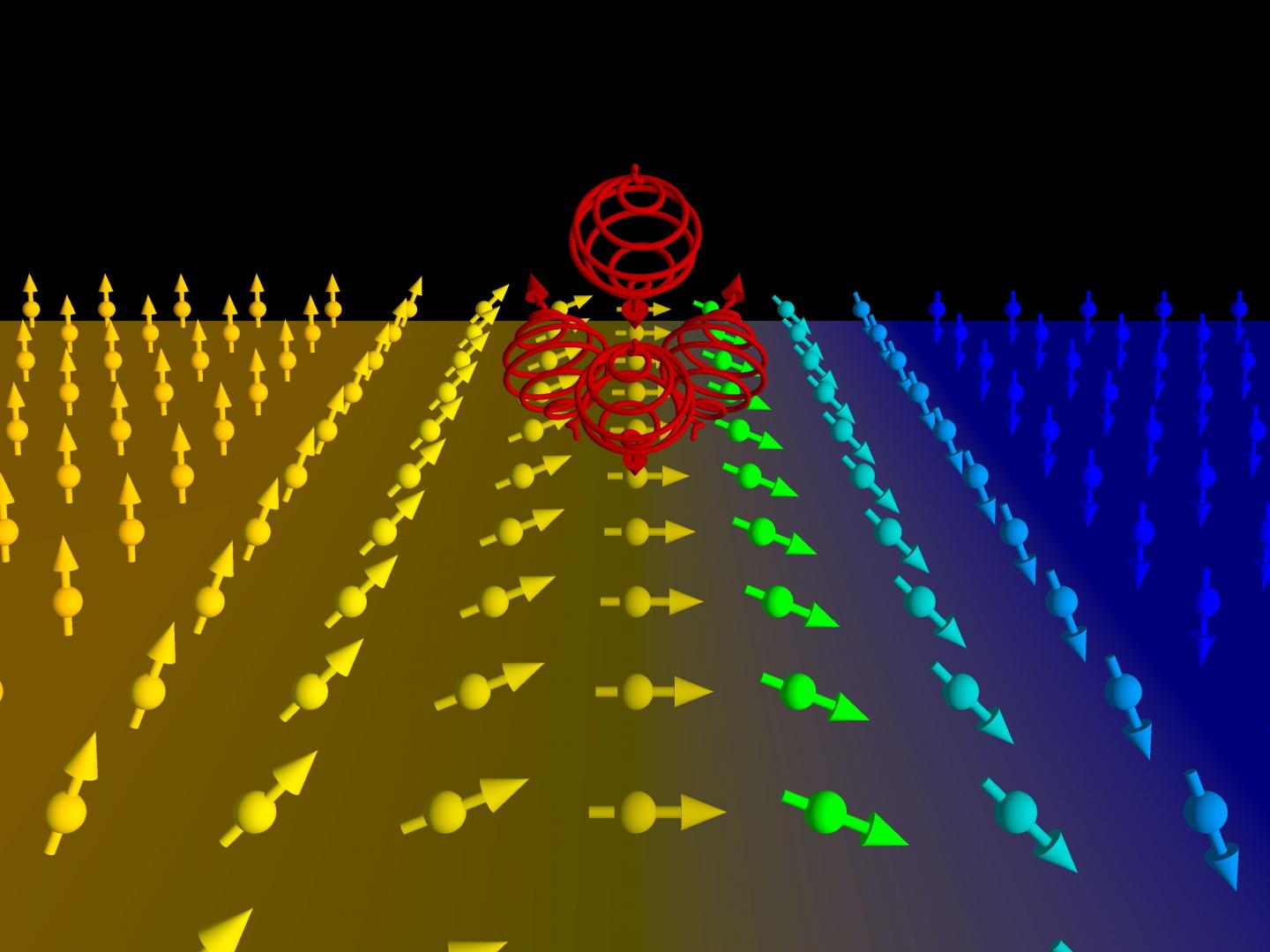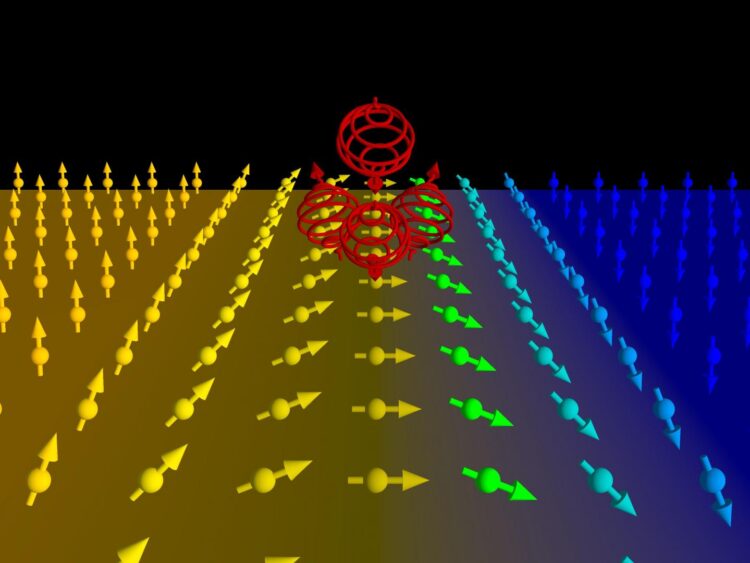Investigation of femtosecond time-resolved x-ray scattering signals reveals a faster chiral compared to collinear magnetic order dynamics

Credit: Ill./©: Frank Freimuth
A joint research project of Johannes Gutenberg University Mainz (JGU), the University of Siegen, Forschungszentrum Jülich, and the Elettra Synchrotron Trieste has achieved a new milestone for the ultra-fast control of magnetism. The international team has been working on magnetization configurations that exhibit chiral twisting. Chirality is a symmetry breaking, which occurs, for example, in nature in molecules that are essential for life. Chirality is also referred to as handedness, since hands are an everyday example of two items that – arranged in a mirror-inverted manner – cannot be superimposed onto each other. Magnetization configurations with a fixed chirality are currently investigated intensively due to their fascinating properties such as enhanced stability and efficient manipulation by current. These magnetic textures thus promise applications in the field of ultrafast chiral spintronics, for example in ultrafast writing and controlling of chiral topological magnetic objects such as magnetic skyrmions, i.e., specially twisted magnetization configurations with exciting properties.
The new insights published in Nature Communications shed light on the ultrafast dynamics after optical excitation of chiral spin structures compared to collinear spin structures. According to the researchers’ findings, the chiral order restores faster compared to the collinear order after excitation by an infrared laser.
The research team performed small angle x-ray scattering experiments on magnetic thin film samples stabilizing chiral magnetic configurations at the free electron laser (FEL) facility FERMI in Trieste in Italy. The facility provides the unique possibility to study the magnetization dynamics with femtosecond time resolution by using circular left polarized or right polarized light. The results indicate a faster recovery of chiral order compared to collinear magnetic order dynamics, which means that twists are more stable than straight magnetic configurations.
Cooperation with leading international partners as the cornerstone of successful research
“We have worked on this experiment for a long time. Now that we know that the ultrafast dynamics of chiral and collinear spin structures differs, we can focus on tackling the dependence of ultrafast dynamics on material properties such as the Dzyaloshinskii-Moriya interaction, an interaction that can lead to the stabilization of chiral spin structures,” said Nico Kerber of the Institute of Physics at Mainz University, lead author of the article.
“We are especially grateful to our Italian colleagues who performed a part of the experiment during the first coronavirus lockdown in Europe. These additional scans were vital for our study and we are happy that video support and the mail-in of samples worked out here. But we are also looking forward to being able to perform these experiments again in person with our colleagues at FERMI,” added Professor Christian Gutt from the University of Siegen, corresponding author of the paper.
“I am very happy to see the next step taken to enable the use of chiral magnetization configurations in novel spintronic devices. The international collaboration with major facilities such as FERMI is crucial to enable such work. Collaborations like this are a cornerstone of our graduate education programs and research centers,” emphasized Professor Mathias Kläui from JGU, supervisor of the first author and director of the Dynamics and Topology (TopDyn) excellence project. “We foster these collaborations with funding from the Collaborative Research Center CRC/TRR 173 Spin+X, the two graduate programs Materials Science in Mainz (MAINZ) and Max Planck Graduate Center with Johannes Gutenberg University Mainz (MPGC), and the TopDyn research area.”
###
Related links:
https:/
https:/
https:/
https:/
Read more:
https:/
https:/
https:/
https:/
https:/
Media Contact
Dr. Mathias Kläui
[email protected]
Original Source
https:/
Related Journal Article
http://dx.





